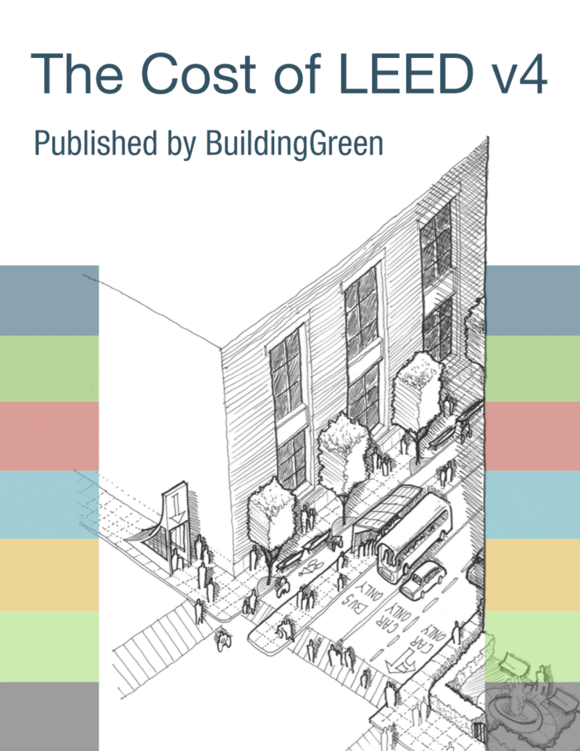100002554
This is a Regional alternative compliance path to BD+C v4 EQc Daylight BD+C v4.1 EQc Daylight, ID+C v4 EQc Daylight and ID+C v4.1 EQc Daylight
Project must be located in a latitude of 55°N or above. (Projects located below 55°N, interested in using this pilot including those in the southern hemisphere may contact USGBC)
Perform annual computer simulations for spatial daylight autonomy 300/50% (sDA300/50%) and spatial daylight autonomy 100/50% (sDA100/50%) as defined in the European standard CEN 17037:2018 for each regularly occupied space. Healthcare projects must use each regularly occupied space located in the perimeter area determined under EQ Credit Quality Views. Additionally, calculate the average sDA values for the total regularly occupied floor area.
AND
Design the building to minimize glare and excessive daylight, considering both high and low sun angles. Meet one of the following:
Provide automated dynamic facade systems. If using this option, the system must be included in the sDA calculations.
Evaluate the regularly occupied spaces for annual daylight glare probability (DGP) as described in CEN 17037:2018. For minimum glare protection, target to not exceed 0.45 DGP for more than 5% of the occupation time of the space. Provide glare control devices for each regularly occupied space. For any regularly occupied spaces with DGP greater than 0.45 for more than 5% of the occupation time, identify how the space is designed to address glare.
Perform annual computer simulations for spatial daylight autonomy 3000/50% (sDA3000/50%) for each regularly occupied space. For minimum glare protection, each regularly occupied space must achieve sDA3000/50% of 0. Provide glare control devices for each regularly occupied space. Note that this approach is only available for this pilot for simplification purposes and should not be considered as a substitution of ASE. 3000 lux is very high illuminance threshold and occupants should never experience it for more than 50% of their time throughout a year. ASE is a more accurate metric than sDA to evaluate daylight excessiveness in buildings.
Perform annual computer simulations for annual sunlight exposure 1000,250 (ASE 1000,250) as defined in IES LM-83-12. For minimum glare protection, target ASE 1000,250 of 10% or less. Provide glare control devices for each regularly occupied space. For any regularly occupied spaces with ASE1000,250 greater than 10%, identify how the space is designed to address glare.
Points are awarded according to Table 1 (linked below).
The sDA calculation grids should be no more than 1-foot (300 millimeters) square and laid out across the regularly occupied area at a work plane height of 33.5 inches (850 millimeters) above finished floor (unless otherwise defined). The area of the grid points, within a space, should exclude a band of 19.5 inches (0.5 m) from the walls (unless otherwise specified). Use an hourly time-step analysis based on typical meteorological year data, or an equivalent, for the nearest available weather station. Include any permanent interior obstructions. Moveable furniture and partitions may be excluded.
The DGP should be calculated where the person is likely to be positioned in the space, or if multiple positions are possible, the expected worst case position, at eye height of 47.2 inches (1200 millimeters) above finished floor (unless otherwise defined) in the primary viewing direction from that position. Include shading in the analysis. Only use DGP where it is expected that the vertical illuminance is a good indicator for the glare perception.
Submittals
Floor plans highlighting regularly occupied spaces
List of compliant spaces with their annual summary values for sDA100/50% and resulting average sDA100/50% value for the total regularly occupied floor area.
List of compliant spaces with their annual summary values for sDA300/50% and resulting average sDA300/50% value for the total regularly occupied floor area.
Geometric plots from simulations
Narrative or output file describing daylight simulation program, simulation inputs, and weather file
Description of design approach to minimize glare and excessive daylight including confirmation with one of the following options selected (1) automated dynamic façade systems, (2) annual daylight glare probability (DGP), (3) sDA3000/50%, (4) annual sunlight exposure (ASE 1000,250)
Results of design approach to minimize glare, including calculation details (for all options except dynamic façade systems) and (as applicable):
Automated dynamic façade systems: description of the system(s)
annual daylight glare probability (DGP): list of regularly occupied spaces and resulting DGP values. For spaces with values exceeding 0.45 more than 5%, explanation of how the space is designed to address glare.
sDA3000/50%: List of compliant spaces with their annual summary values for sDA3000/50%
Annual sunlight exposure (ASE 1000,250): List of regularly occupied spaces with their annual summary values for ASE 1000,250 . For spaces with values exceeding 10%, explanation of how the space is designed to address glare.



